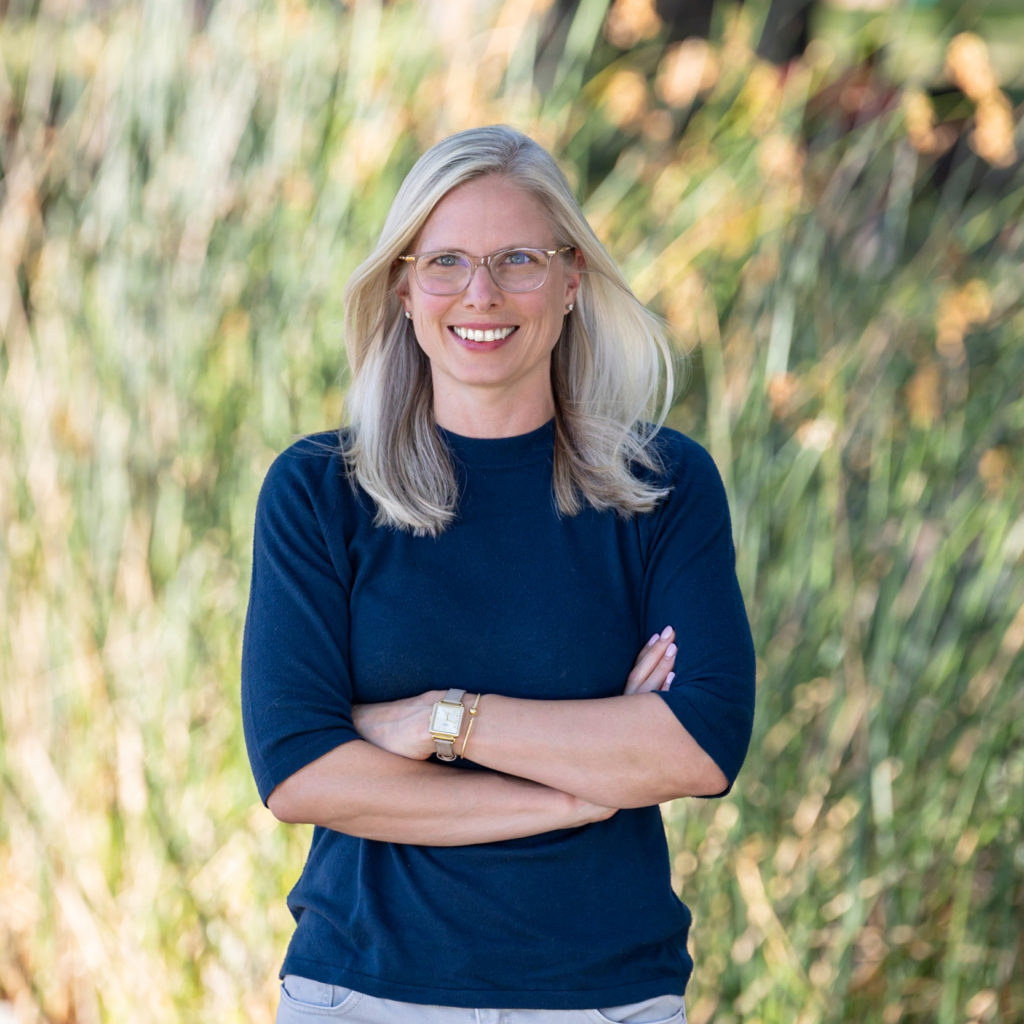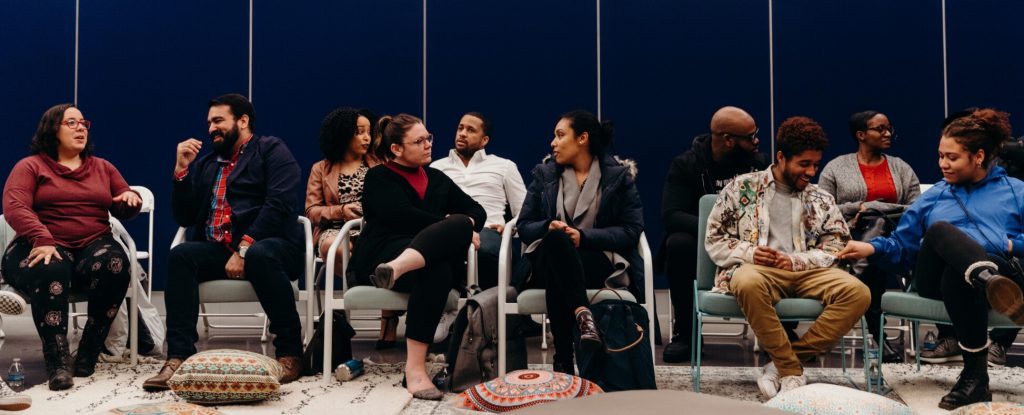Transitioning From Start-up To Student Debt Movement Leader
“The reason you don’t hear more horror stories like this one is because people are ashamed to admit it, or just terrified almost to say it aloud, because by talking about it, the reality of the situation is almost more ominous than one can bear.”
Kate Schweizer She and her husband carry $500K in debt, based on $220K in initial loans for their daughters’ college educations
The Ask
As of 2021, 45 million Americans owed over $1.76 trillion in student loans, a crushing burden that cuts across generational, geographical and political lines. That’s 45 million individuals postponing everyday dreams of starting families, buying homes, pursuing long hoped-for careers and building businesses. Further, student debt disproportionately affects Black, Indigenous, and people of color (BIPOC) students and their families and continues to worsen economic inequality.
Student Debt Crisis Center (SDCC) was founded in 2012 to give voice to this burden that was so often shouldered privately. Ten years on, they continue to function as a scrappy, grassroots, roll-up-your-sleeves team.
In 2021, SDCC was ready to come into its own. They’d developed a deep well of trust with borrowers and policymakers alike. They’d raised enough money for its president to hire staff and expand programming. They wanted, for the first time, to formally fundraise. They were ready to move from the grassroots hustle to a more formal status.
This was the moment SDCC approached GRS, to support them in this transition.
SDCC, Here To End The Student Debt Crisis
“Education Department will cancel student debt for more than 320,000 borrowers”
“What would it take to solve the student debt crisis?”
It’s likely you’ve seen countless headlines like these recently, and it’s not happenstance. The student debt crisis narrative was deliberately planned and penned over the last ten years, led in large part by SDCC.
SDCC began with a blog post by a student loan borrower in 2010 proposing, boldly, that all student debt should be forgiven. The post went viral, leading to a petition which garnered 1.2 million signatures in just a few months. This giant, unprecedented list of borrowers represented the 45 million postponing life in service of loans.
Student Debt Crisis Center was built on that wave, with the sole focus to end the student debt crisis by:
- Helping borrowers navigate the bewildering and frustrating loan repayment system.
- Working to fix the failed policy experiment of debt-financed higher education.
By 2021, SDCC’s 2 million borrowers across 50 states had taken 5.5 million actions. At the heart of SDCC’s work is the conviction that we can no longer burden students with the ever-increasing costs of higher education.
The Grassroots Solutions Approach: “I Can See Clearly Now…”
When you’re doing the work, it’s hard to see your role in the grand scheme of things, especially in a movement like relief for student debt, which was still in its early years.
Our outside perspective proved key for SDCC, as we were able to analyze the landscape and determine how they’d best serve borrowers going forward.
In addition, hands-on help was essential for this project to move at speed. While SDCC’s transition was much needed, they were, as always, knee-deep in their everyday work.
The Voice of the Borrower
As we mapped the landscape, we realized that Student Debt Crisis Center’s originating asset, 1.2 million borrowers’ signatures, was also their defining characteristic. Over this past decade, SDCC had emerged as “the voice of the borrower,” with a magnificent, distinctive role to play in the ecosystem. All our work flowed from there.
Carry Their Water
SDCC was (and is) lean, and their day jobs were demanding. We structured the engagement to use their time extremely well. Pointed, light homework—“what you need to answer this week”—was accompanied by weekly 90-minute work sessions over eight weeks.
Between sessions, we did the heavy lifting, calling on our full toolbox: SWOT, Theory of Change, strategy design, staff structure, budget, ways of talking with external audiences (especially philanthropies) and, as needed, coaching.
Transformative Structure
501(c)4 status made sense for SDCC from the get-go, given their advocacy work. It didn’t, however, reflect their extensive borrower education programs. It also created a structural roadblock: SDCC couldn’t raise funds as a nonprofit.
At our urging, SDCC took action in real time toward adding a 501(c)3 designation, opening avenues with philanthropies who wanted to support them. It was a crucial step, getting them ever closer to their remarkably high potential.
Moving Forward
Typical of many grassroots organizations, SDCC had grown organically, and when they came to us, they did anything and everything related to student debt.
Spring-boarding off their clearly defined role as the “voice of borrowers,” we developed three key tools for SDCC to leverage as they come into their own.
Theory of Change
Once we’d articulated SDCC’s theory of change, we asked ourselves, is it really that simple? Indeed, it was.
“By centering the needs and voices of borrowers and partnering with allies, we will impact public policy and end the student debt crisis.”
SDCC Theory of Change
A Three-Year Growth Plan
The years 2021–2024 would be pivotal for SDCC in building organizational capacity. Their three-year Growth Plan would serve as a map for their transition into a more mature organization, detailing goals for each year and meaningful indicators of success, specifics on staff required to deliver on those goals, and the budget required.
A Prospectus to Share with Funders and Potential Partners
Engaging with philanthropies is its own dance, requiring an organization to present the big picture and detail that puts funders at ease. SDCC’s prospectus provides that credibility, bringing together:
- SDCC’s Theory of Change and its reason for being, bolstered by stories of borrowers and the statistics that reveal the enormity of the problem.
- SDCC’s ambitious yet right-sized growth plan.
- A robust explanation of SDCC’s programs providing resources, lifting borrowers voices and advocating change to its key audiences of borrowers, partners and policymakers.
Reflections
Few grassroots organizations successfully come into their own as mature players. SDCC has clearly rooted itself among these players. We’re proud to have helped them take a moment’s pause by creating space for big thinking about what the landscape needs, where SDCC could best serve, and how to put intentional structure around that.
Perhaps most importantly, during our time together, there was a clear shift in how they see themselves. “Call the meeting” beautifully captures the leadership mantle SDCC is taking on. They now have clarity about their own expertise, their unique role as the voice of borrowers, and the programs necessary to end the student debt crisis. When Student Debt Crisis Center succeeds, it will be on behalf of all of us, individually and as a country.
One last note
Student debt is a burden that touches each of us, directly or by a few degrees of separation. If Student Debt Crisis Center can help you or someone in your orbit, or if you know a person or organization who would like to lend a hand to their mission, we and SDCC invite you to join the movement.








